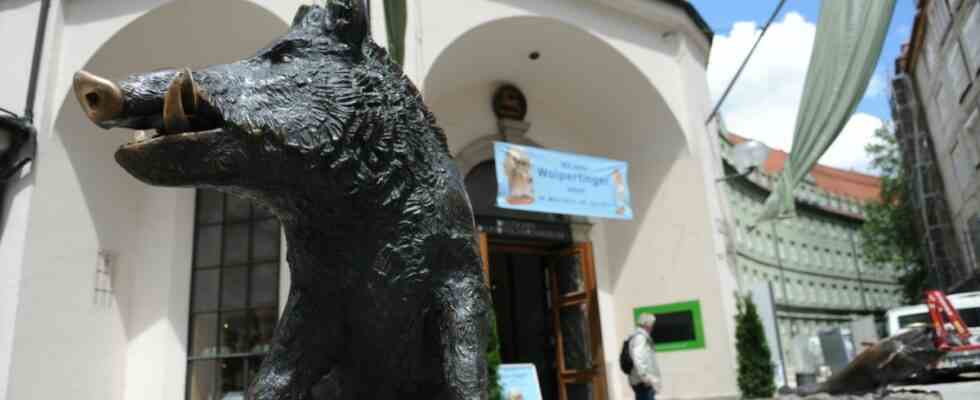The possibly most photographed wild boar in the world has lost none of its attraction – especially for tourists, whose number is increasing noticeably again in Munich’s pedestrian zone. There, not far from the Frauenkirche, in front of the German Hunting and Fishing Museum, the sculpture “Sitting Boar” is enthroned, just as popular a motif for souvenir photos as the bronze catfish, just a few meters away.
Alone with holidaymakers and locals who are drawn to the museum after the animal selfie, the joy is increasingly giving way to frustration. The reason: several areas in the permanent exhibition are closed, in some places it makes a neglected impression, many of the tablets in the water worlds department do not work, and at the media stations in the so-called forest path, the visitor usually presses the screen in vain – because the technology is on strike . Museum guests have expressed their dissatisfaction via rating portals on the Internet. And the museum also received “two or three e-mails” with complaints, reports director Manuel Pretzl, who emphasizes: “There is a lot more good feedback.”
Manuel Pretzl, director of the Hunting and Fishing Museum, calls the consequences of the Corona crisis for his house “dramatic”.
(Photo: Stephan Rumpf)
Pretzl, who sits in a leading position on the city council for the CSU, admits that areas such as the fox’s den, the walk-in ship and the petting animals popular with children are currently closed – because of Corona. That will remain the case with the Fuchsbau, since it is difficult to disinfect and there is hardly any air exchange, says the museum director. The petting animals area and the ship, on the other hand, are scheduled to open soon. The White Hall on the top floor is already accessible again. This area also had to be closed in order to dismantle a special exhibition, says Pretzl. Looking at the media stations, he confirms that the museum is currently struggling with “technical problems”. The reason for this is not the screens, but the chip cards with which visitors can register at the forest trail stations. “It’s not going smoothly at the moment,” admits the museum director. “But we are already working on a solution.”
Pretzl does not want to present the current shortcomings as a direct result of the pandemic. However, he does emphasize that the consequences of the Corona crisis for his museum were “dramatic”. After all, the foundation of the German Hunting and Fishing Museum of the same name has “only a very limited financial volume”. In normal years, a quarter of the budget comes from admission fees. Accordingly, the shutdowns “had a massive financial impact on the facility,” said Pretzl. The lack of school and kindergarten groups as well as tourists – all important target groups of the museum, which was founded in 1934 and has been located in the former Augustinian church on Neuhauser Straße since it reopened in 1966 – made things even more difficult.
As a result of Corona, all guided tours were also discontinued. They should now “slowly start up again,” says Pretzl. He hopes to attract more visitors, especially from schools, to the special exhibition “Plastic in Water”, which will show, among other things, a square meter of Isar beach and the waste it contains from mid-May. With this show, too, the museum wants to ensure positive news and more satisfaction among the guests – even after the souvenir photo with wild boar and catfish.

